#Catherine Foundling
Text
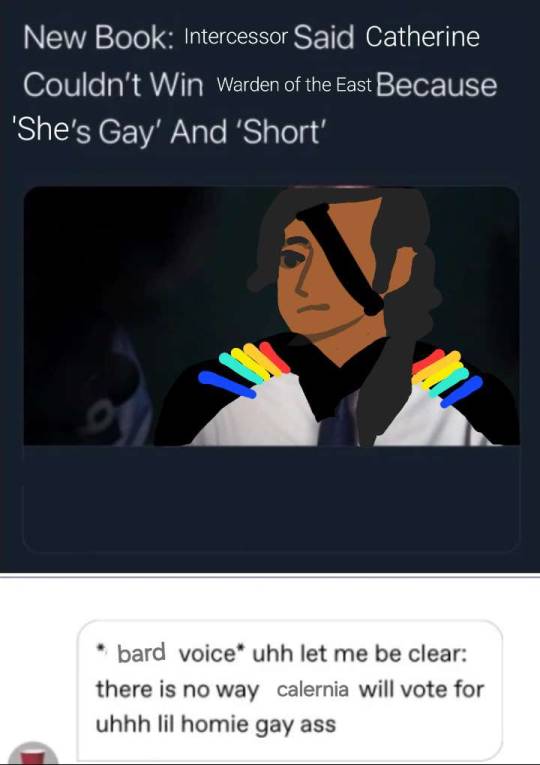
How about that 'return to ater' arc
23 notes
·
View notes
Text
Average a practical Guide to evil character has three titles actually Just a statistical Error. Titles Catherine who lives in a Cave and has had three Names, two callowan/Praesi noble titles, two fae Mantels, three drow titles and one epithet is an outlier and should Not have been counted
#idk man#if you really want to you can count both versions of squire separately in which case she has four Names#which brings her number of titles up from eleven to an even dozen#if you were willing to force it you could say that many callowans also called her whatever the noble title attatched to marchford was#as opposed to lady of marchford#i wanna say marchioness? really not sure though#a practical guide to evil#apgte#catherine foundling
74 notes
·
View notes
Text
in the alternate timeline where pgte got an anime i think it'd be really cool if the ops just followed the heroes as if they were the protagonists and framed catherine and company as the antagonists they need to face it'd be so cool and epic and poggers
#a practical guide to evil#practical guide to evil#catherine foundling#uhhh idk what else to add in these tags#shoutout to roland that's my goat right there
15 notes
·
View notes
Text
There's just something inexplicably funny about saying to the face of someone you're planning to blackmail that you would be blackmailing them. Like, not only grabbing the bull by its horns but also mocking it with a "mooo".
5 notes
·
View notes
Text
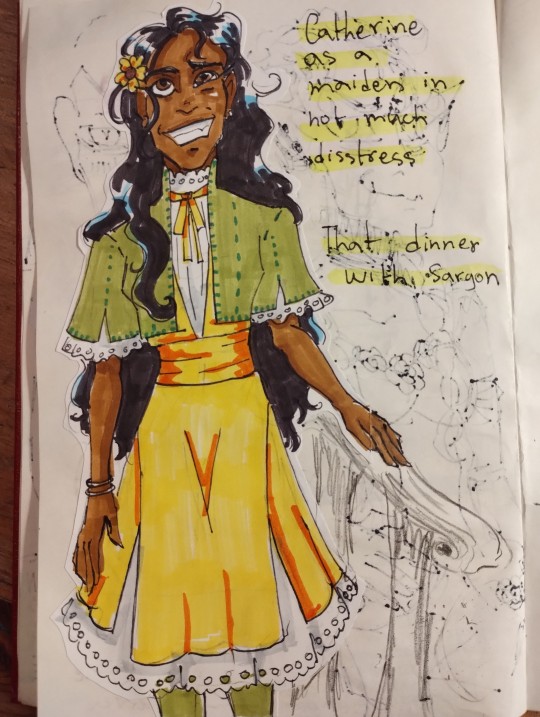
Cat in that sundress cause she should wear them more.
Like imagine becoming one of the most powerful people ever and you can't even wear your favoured clothes (ノ`Д´)ノ彡┻━┻
#Catherine Foundling#practical guide to evil#fanart#practical guide to evil fanart#zuzu's art#that dinner with Sargon#maiden in disstress#Catherine in a sundress#traditional art#sketchbook
2 notes
·
View notes
Photo
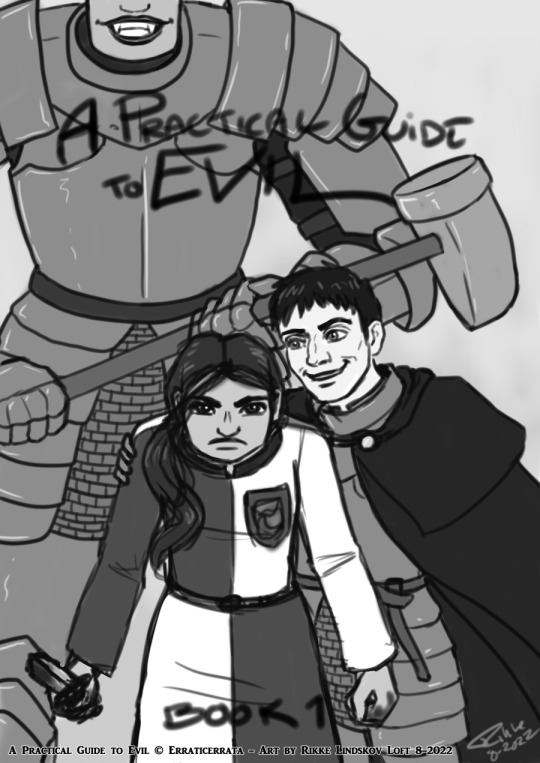
Cover sketch for Book 1
Having some quick fun. Won't be doing more with this, though.
Captain probably should be a tad bigger than this, but ehhh... Composition.
Also having fun with Cat's school clothing. Callow seems to have a pretty clear European medieval inspiration, so no. Cat would not wear a modern sailor uniform. Her school clothes with the school heraldry on would probably have a much more medieval livery feel.
#a practical guide to evil#pgte#Catherine Foundling#amadeus of the green stretch#black knight#sabah#fanart#gwennafran art
45 notes
·
View notes
Text




Catherine, Princess of Wales visits The Foundling Museum on May 25, 2023 in London, England.
#kate middleton#catherine middleton#catherine princess of wales#foundling museum#royal visit#pink outfit#elegant#british royal family#royal style#royal fashion#royal family#british royal fandom#princess kate
52 notes
·
View notes
Text
Musical Guide to Evil
It took us way to long to figure it out but we've finally grasped enough to piece together something coherent about music in the Practical Guide to Evil.
How it took us four re-reads to notice it I have no idea, but better late than never?
The Guide comes with its own internal leitmotivs, songs that make an appearance paired together with a story, and once you realize it the songs stop being just a part of the setting and become another option in the narrative toolbox.
Songs live and die alongside the stories they represent, in the Practical Guide to Evil.
The Legionaries Song makes an appearance in the first chapter, and with it, so does the story of the Legions of Terror, the armies that devastated the Callowan forces, and spearheaded the Conquest. So much so that Catherine herself is at that point dead set on attending the War College to learn from a dangerous enemy. They are strong, and the song establishes that.
The last mention of the Legionaries Song takes place right after the Battle of Kala and at this point the Legions have shattered against each other, the machine of war turned against itself, and when the song is sung then it is bitter and weary, the last notes of the Legions' story, finally slain.
Most obvious is the Girl who Climbed the Tower, which is sticks in the mind of...apparently every claimant to the title of Dread Emperor? I'm guessing it comes back so many times in the Guide because the story of the Dread Emperor is a very old one, so the groove it is set in is deep like few others. From Black hearing it even at his low point at the end of Book 5 to Catherine humming it even in Book 2 after she extorts the High Lords; and of course Akua hearing for half the story.
Which brings me to perhaps the best use of these songs as a narrative tool. When Akua, having seemingly turned coat and half-heartedly plotting in Ater in Book 7, wonders with increasing desperation: "Why wasn't I hearing the damn song!!!?"
Because you've been hearing the leitmotiv for your current story of redemption for a few books now and you haven't even realized, girl. Or did you think the Tyranny of the Sun was stuck in your head for years for no reason?
Other examples coming to mind are the Fox is King when Catherine is dueling the Wandering Bard in the Arsenal in Book 6 (it's even lampshaded and we missed it the first three times...)...She even weaponizes that by lying about it to the Bard.
One of our favorites has to be related to Cordelia Hasenbach. She notably rejects the story, or at least the Role associated with it, but Too Many Cooks is mentioned or alluded to at least twice when she is putting the screws on the Princes. It might very well be a leitmotiv to the story of the First Prince if she had picked the name in Book 5 during the Salia plots.
I think that's all of them but there are a few songs which we couldn't fit within that theory, so...well, if you have takes I for one am curious!
Also there needs to be a melody for ALL OF THESE, like, YESTERDAY.
#pgte#pgte spoilers#akua sahelian#cordelia hasenbach#catherine foundling my beloved#Legions of Terror#practical guide to evil#pgte brainworms#or earworms in that case I guess
21 notes
·
View notes
Photo


A Royal Recycling (part 302)
Alexander McQueen
#kate#kate middleton#catherine middleton#duchess of cambridge#Princess of Wales#a royal recycling#Royal Recycling#Alexander McQueen#blazer#2022#2023#uk#england#london#early years#shaping us#foundling museum#british royal family#my edit#katepast#royals#fashion#Royal Fashion#the royal institute#The Royal Foundation
37 notes
·
View notes
Text
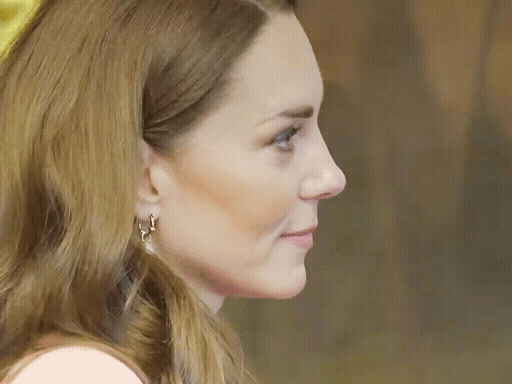

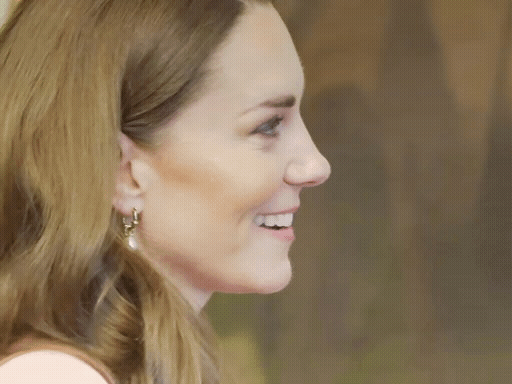
The Princess of Wales visited the Foundling Museum in London | 25 MAY 2023
#princess of wales#the princess of wales#princess catherine#catherine wales.#british royal family#british royals#royalty#royals#brf#kate middleton#catherine middleton#duchess of cambridge#royal#british royalty#my gifs#gifs#foundling museum 23#25.05.2023
31 notes
·
View notes
Text


The Princess of Wales visits the Foundling Museum in Brunswick Square, London on May 25th, 2023.
#mine#edits#princess of wales#kate middleton#catherine#brf#british royal family#foundling museum#2023
6 notes
·
View notes
Text
One of my fave Moments in practical Guide to evil so far is when Cat Orders hakram to tear scribe's eye Out, but He has His Hand full so He Just spontaneously Grows a new Hand so He can do it anyway. And then He doesn't do it
#nobody is doing it like hakram#thats what i call loyaltly#idk man#a practical guide to evil#catherine foundling
31 notes
·
View notes
Text
Whats under that coat?
Catherine in Unidentified Designer Teal Blue Single-Breasted Coat

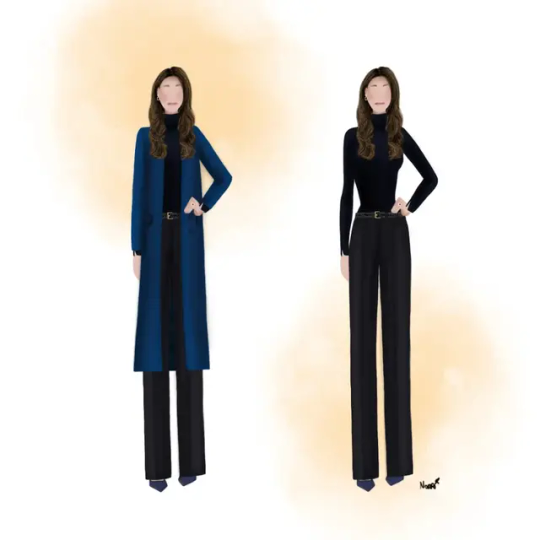
#catherine middleton#kate middleton#kate#duchess of cambridge#princess of wales#whatsunderthatcoat?#whatsunderthatcoat#unidentified designer#Coat#2020#2023#Uk#england#london#Foundling Museum#early years#my edit#british royal family#royals#fashion#royal fashion#sketchbook#drawing#Art
0 notes
Text
Huh, realized I wasnt actually sure of this myself. For those of you who have read both Worm and Guide
112 notes
·
View notes
Text
christening this blog with the raw power of my hyperfixation in honor of it being 07/08: perfect thematic and color harmonies and inversions


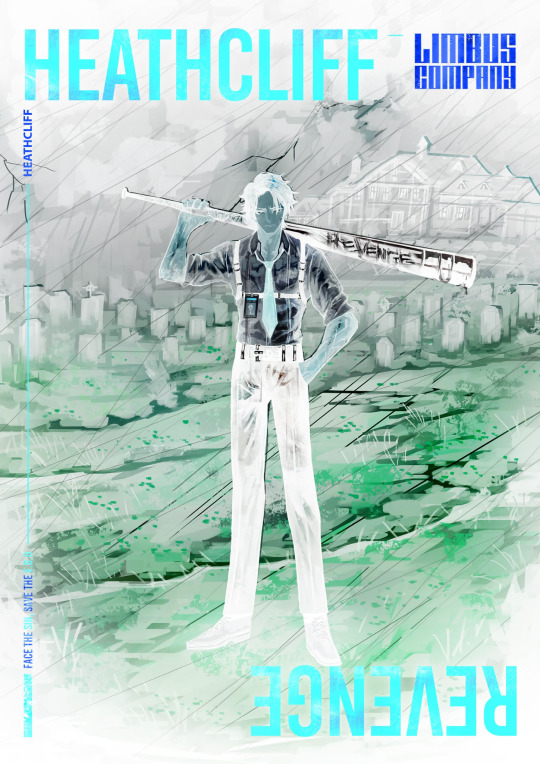
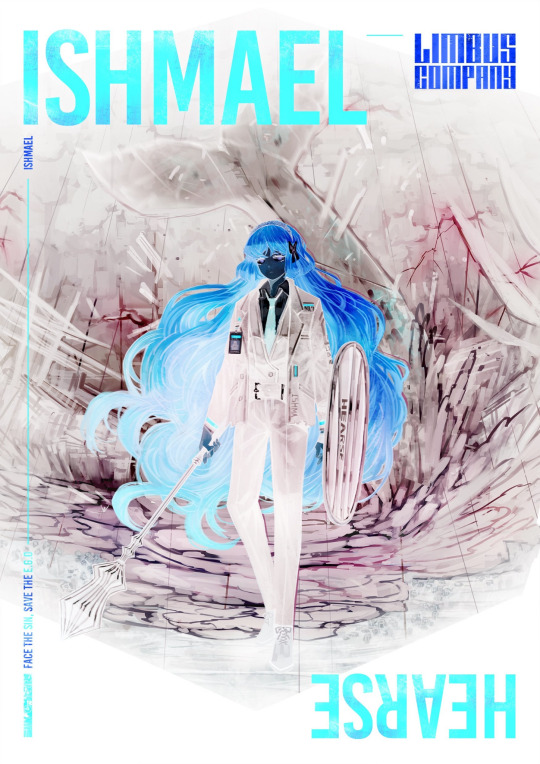
i don't necessarily believe that inverted colors are overly important when it comes to creating characters who are intended as reflections of each other. however, in the case of ishmael and heathcliff? color is one of two inversions present in these pieces. the second is in the inversion of the ways they carry death with them.
their shared theme in their promo art is being at the mercy of terrible storms as a metaphor for having agency taken from them. ishmael's art centers her on one single defining tragedy, while heathcliff's centers on a long string of tragedies that had always defined his life.
fundamentally, the two of them embody death for the sake of their own personal survival. for ishmael, it is a mantle she clings to because she feels she has nothing else worth living for. for heathcliff, the mantle is forced upon him until he learns to embrace it as all other options are taken from him.
speculation and source material discussion below the cut.
—
ishmael is the hearse – a statement loaded in several layers when factoring in her source material. the first layer of thematics is embodied in ishmael herself: she is perpetually carrying everyone with her, refusing to put them in the ground and let them rest; constantly taking on jobs and exploring far-out places in search of those that still live. as several others have pointed out, ishmael is the only sinner who is drawn every time with "fish eyes" (i.e. without any light in them – likely another loaded metaphor). she isn't ready to let them go yet, and her life is now defined by their death.
the second layer is a little more on-the-nose: source ishmael was the only survivor of the pequod's destruction thanks to a coffin meant for queequeg that ishmael utilized as a lifeboat.
the third is more speculation territory, but with all the implications of ahab being someone she is seeking revenge against (her promo referencing "that bastard", her base identity revolving around wrath), it's important to note that there are several references to hearses related to ahab in the source material. in the latter half, a prophecy is revealed to ahab that states he will die after seeing two hearses. at the end of the book, he sees them: the first being the whale itself, carrying the dead body of the one who gave him the prophecy; the second is his own ship, the pequod, which is now a doomed vessel delivering everyone on it to their grave at the bottom of the ocean. in a way, her embodying the hearse is possibly to be the final death of ahab – the last thing he will see before she delivers him to his final resting place.
heathcliff is trickier to speculate on, as it's been very heavily implied that we are seeing him as he is in the middle of wuthering heights' first three-year timeskip. this is referenced particularly strongly in his N corp. identity, where he mentions the catalyst for his leaving in the source material. for those who might not know: catherine demeans his worth when she thinks he can't hear, so he runs away to "make something of himself" to return and take her and the estate for himself as an act of revenge against everyone who hurt him. since he's essentially been pulled from the middle of his spiraling character arc, this leaves a lot of room for project moon's spin on him.
but with that explicit reference in N corp. (as well as a softer reference in his sunshower E.G.O. identity), we can assume with relative safety that events before the timeskip are similar in limbus as in source. in source, heathcliff was a romani foundling taken into a wealthy family – propped in limbus with recent references in canto 4 to nesters sometimes being "tourists" in the backstreets for novelty. however, heathcliff's arrival was scorned by all but the earnshaw patriarch and catherine; even the primary narrator, nelly dean, regards heathcliff's arrival to the estate as an omen of death and destruction. most characters assault heathcliff with mask-off racism. he's called slurs, compared to demons, and described as inherently evil, despite the fact that he was (at the time) an insecure and meek child who clung to the very few who loved him for safety.
not long after his arrival, his adoptive mother passes, all but "proving" the omen correct. then, his adoptive father passes just a few years after. these deaths kickstart many years of horrific abuse at the hands of catherine's older brother (and now estate owner) hindley. hindley abused both heathcliff and catherine physically and emotionally. heathcliff's violence in particular was deeply racially motivated: he was forced out of schooling and made into a slave of the estate. all the while, it was reiterated to him that he is an omen and responsible for all of hindley's troubles, including bringing death upon his late wife.
with the implication that heathcliff's unknown birth family is dead, his life is defined by a string of funerals that all tie back to him in some way. either he loses a loved one, or it's blamed on some otherworldly force he is allegedly in command of.
as the abuse mounted, heathcliff and catherine's bond became more codependent and obsessive. with this shift came the beginnings of heathcliff's proclivity to escalate violence. at first, it's deeply sympathetic, if not outright justified. though he expresses violent thoughts a few times prior, heathcliff's first violent act is against hindley in retaliation against yet another racially charged instance of abuse. and even as he leaves with catherine's insult in his mind, he vows to further embody what the earnshaws saw him as and to take what (and who) he views as rightfully his. where it gets distorted is that so entrenched is he in this role that his violence perpetuates against the next generation – by all accounts, entirely innocent people who are now on the receiving end of unearned horrific abuse that he himself had gone through.
this is why i want to point out his base E.G.O. depicts him carrying a corpse of someone he presumably killed, comes with a threat that he will kill his target, too. he revels in the image of being a relentless agent of death and senseless destruction.
however, in limbus there is still the shreds of who he used to be; before the timeskip, source heathcliff instinctively saved hindley's son's life, only to realize that this gesture of his goodwill benefited his abuser. this has him vow to never express that side of himself in the estate ever again. in limbus, however, heathcliff can do fundamentally compassionate things without the oppressive air of the man who literally enslaved him weighing down on him – such as in canto IV, where he saves the life of gregor, expresses concern over ishmael feeling sick, and urges dante to save the dying don quixote before himself.
all of this is to say, there are many different places heathcliff's character could go in limbus, but at the core of it all is his struggle with virulent (and somewhat/mostly justified) hatred of those who dedicated their lives to taking everything that ever made him happy. this is a similarity he shares with ishmael, whose sole purpose for living is also in pursuit of revenge against a single entity.
by all accounts, ishmael has become death by her own doing in reclamation of events outside of her control. contrast to heathcliff, who was always destined to be death, which he learns to embrace in his own form of reclamation. these inverted internalizations result in a shared struggle with anger issues – the only real difference being that ishmael's anger is barely repressed, while heathcliff's is overly expressed.
project moon's series as a whole is extremely jungian. in lobcorp/ruina, every core suppression/realization is fundamentally the boss enemy confronting an uncomfortable facet of their shadow self. with this in mind, i believe the parallels ishmael and heathcliff share combined with their surface-level differences fostering disproportionate animosity is another intentional display of the way we fight against our shadow despite it always being a part of us. with the general series theme of breaking cycles, i would not be surprised if somewhere later down the line we get both ishmael and heathcliff acknowledging how much they fundamentally understand the other.
we already get a taste of this in ishmael's log of the blubbering toad. she reacts with primal anger towards its crying and projects a lack of confidence and self-worth onto it. heathcliff is not only the first to defend her, but also states he feels the same. later, ishmael admits to seeing herself in the abnormality and contemplates a form of compromise.


(shout out to sinclair, a character defined by his internal war between repression and expression, bridging their gap)
whether they want this kinship or not, ishmael and heathcliff are fundamentally looking for the same thing from the same vantage point, only at slightly different angles. with the precedent project moon has set by uniting angela and roland (whom ishmael and heathcliff echo in similar parallels), it feels very intentional for the two of them to be frequently paired together and expressing similar opinions on several narrative conflicts.
there just really is something about two alienated people finding something in each other, even if it isn't always amicable or comfortable.
#limbus company#limbus company speculation#lcb ishmael#lcb heathcliff#ishcliff#heathmael#i don't care how you see them as long as it's at least “in this together”#cw racism#cw child abuse
174 notes
·
View notes
Text
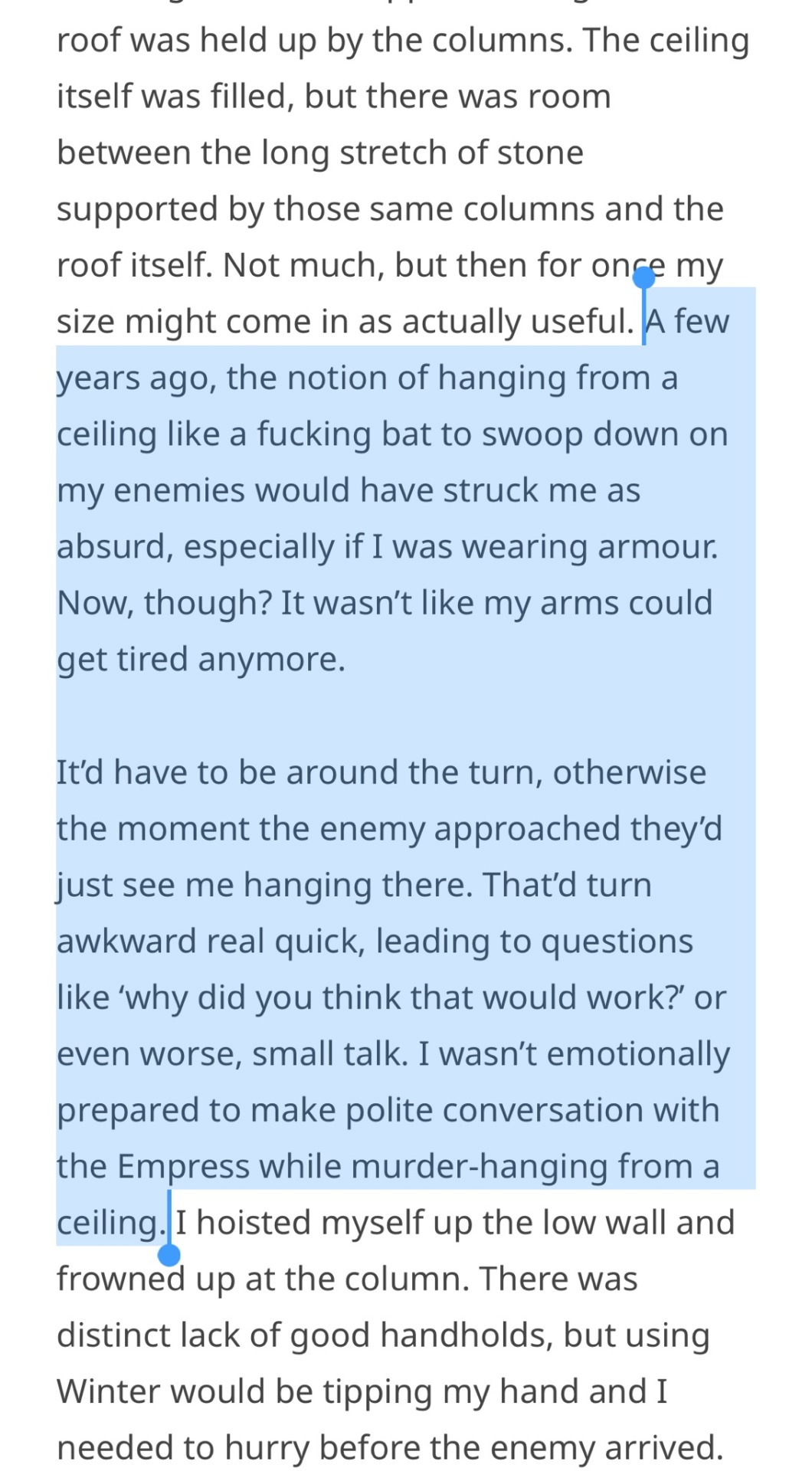
catherine foundling remains absolutely iconic
incredible banter doesn’t make or break a story, but it really feels like the cherry on top
34 notes
·
View notes